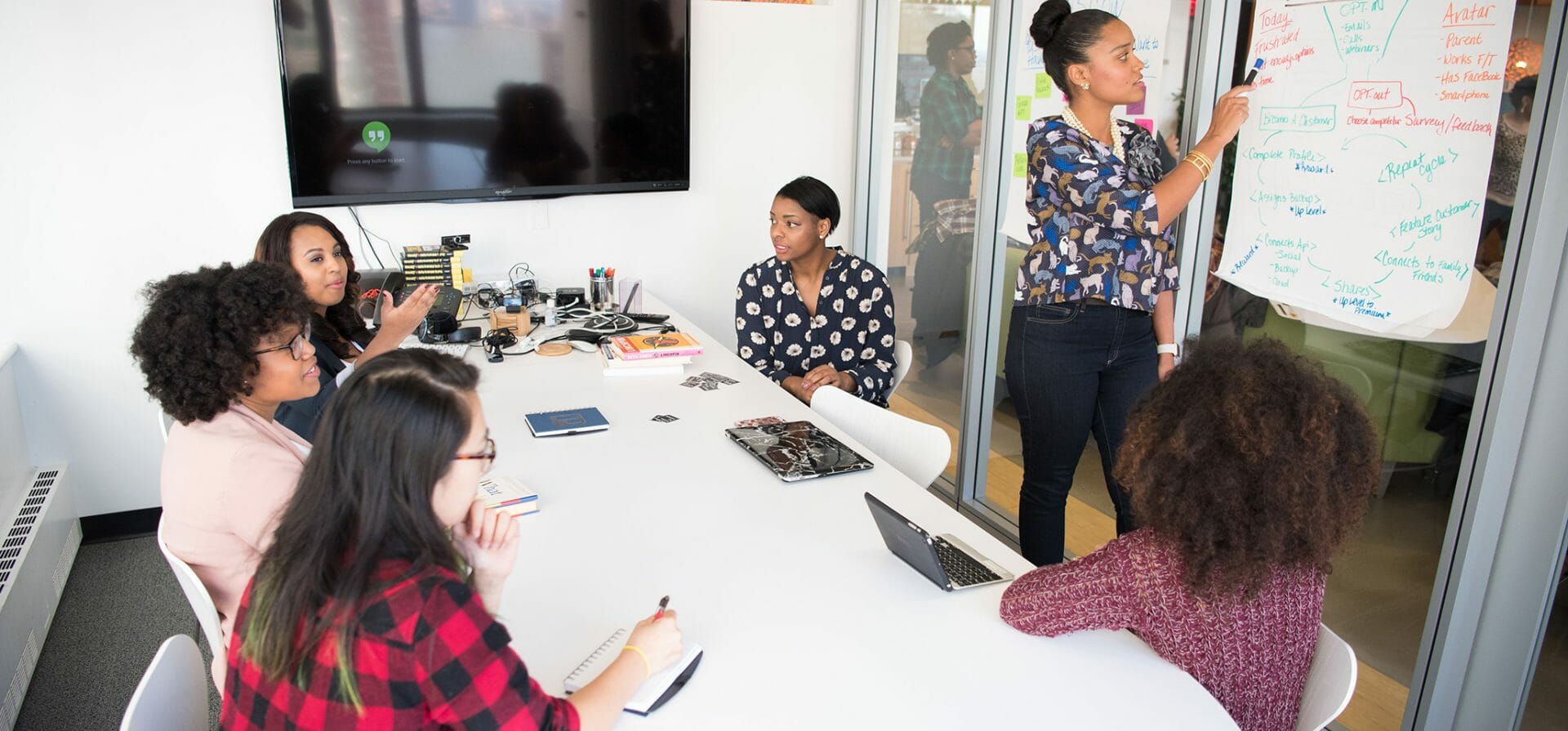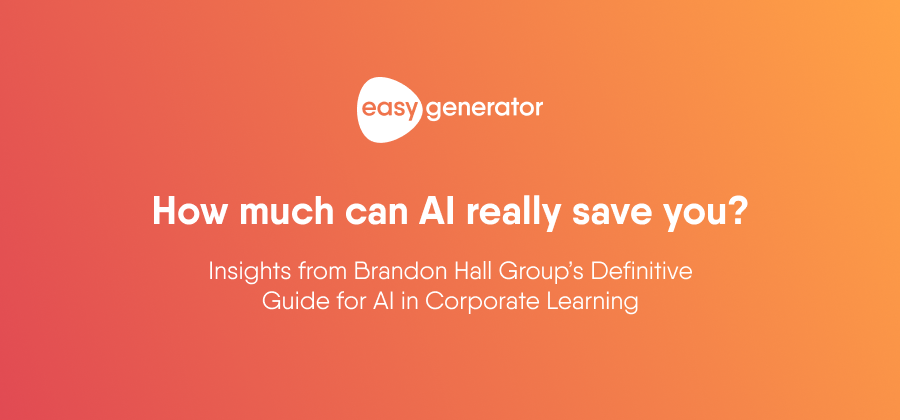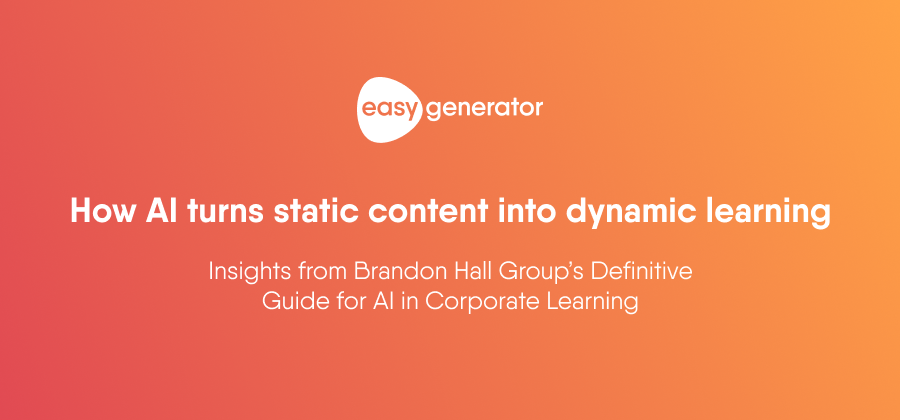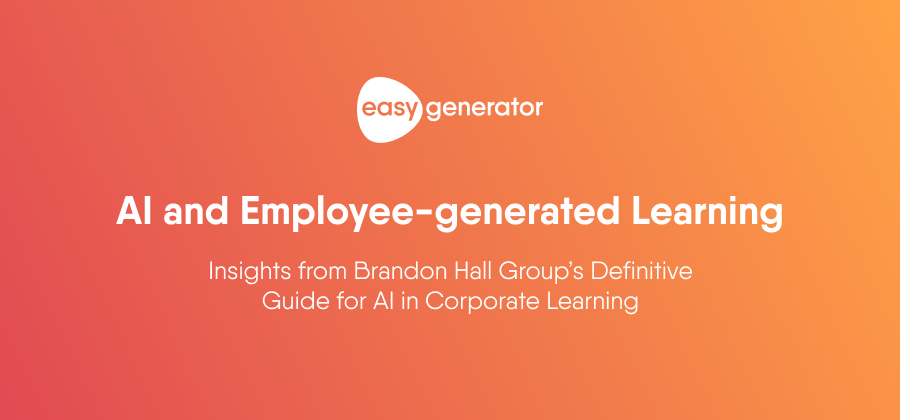How to switch to an Employee-generated Learning mindset
If you’re reading this, you’re probably familiar with, or at least have heard of Employee-generated Learning. If not, take a look at our guide to the what and the why of Employee-generated Learning before reading on.

In a nutshell, Employee-generated Learning (let’s call it EGL for short) is a learning and development model that shifts the responsibility of content creation from L&D to your employees or subject matter experts (SMEs). They hold all the expertise and the knowledge that you wish to share.
By moving away from the typical back and forth process of working with an instructional designer, you’re able to create more e-learning content faster and at a lower cost.
But this does mean a change to how your team, your employees, and the business as whole works and thinks. And all too often, change can be difficult to agree on.
Learning managers at Nielsen, Kellogg’s and Unilever – three companies who have implemented EGL – all agree that step one of implementing this approach is changing stakeholders’ mindset. But how do you do this? That’s what we’ll help you uncover in this article.
The key to changing mindset is educating your employees, L&D and the business on the many benefits of EGL. So let’s look at how you can create and nurture this new mindset for each group of stakeholders.
Employees and subject matter experts
Your employees are the cornerstone of effective Employee-generated Learning. It’s right there in the name! So getting them on board is key. But thankfully there are a number of benefits of EGL that can help you promote this change in mindset.
- Become recognized experts. Your sales manager has unparalleled expertise on your product, but without EGL, only her direct team knows. By creating and sharing learning content on the product, and putting her name to it, she can be celebrated and recognized for her expertise throughout the business.
- Connecting with other experts in your field. Without EGL, and particularly within larger enterprises, these SMEs often do not know about each other. At Easygenerator, we’ve seen many examples from our customers of subject matter experts connecting and starting to collaborate because of EGL.
- Higher engagement at work. Instead of following the top-down learning agenda of the learning department, employees are taking an active role in their and their colleagues’ development. By being part of the process they can feel engaged in guiding what knowledge needs to be shared and can actively create this relevant content.
- Save time on training. Using the example of your sales manager again; as an expert on the product, she has to take time out of her busy schedule a couple of times a month to train new employees. But with EGL, she can download all her expertise into a course that can be given to new employees instead. She now has more time to dedicate to what she does best – drive sales.
Business leaders
Your business leaders are another key group you need buy-in from. They need to support, enable and facilitate EGL in order to make it happen.
Research by Easygenerator shows that “recognition, credit, and visibility” are key drivers for getting employees to share their knowledge. Business leaders have a huge impact on that. The same research shows that having “no time”, “competing work priorities” and “not receiving credit” are major blockers for employees. Business leaders and managers can influence all this, creating a work environment where knowledge sharing is valued and rewarded.
But why should business leaders create this environment?
- More cost-effective. In business, making things happen often boils down to dollars and cents. At Easygenerator, we’ve found our customers have been able to make significant savings by switching to an EGL approach versus working with third-party instructional designers.
- Much faster. EGL is also much faster. Instead of going backward and forwards with instructional designers, L&D and your subject matter experts, content comes straight from the source of the knowledge: your employees. This is the only way for content development to keep up with the ever-increasing speed of business.
- Keep content up-to-date. With SMEs responsible for the content there is a direct connection between the knowledge and the content. This is the most important condition for being able to keep your content up-to-date.
- Address business needs. Your employees have more hands-on knowledge about real business needs than any external vendor ever could. By empowering your employees to share their knowledge you can ensure that your learning content is providing highly relevant solutions to your business needs.
Scale your e-learning activities
Discover the power of Employee-Generated Learning and how it can help speed up the circulation of knowledge in your company.
Learning and Development
And then there’s your own team. Employee-generated Learning represents a big shift in how L&D does things. After all, this new approach has significant implications for your everyday work.
With this new approach, your content development will probably be limited to topics like compliance and security training. Most content creation will shift to your employees. This means the instructional designer’s role changes from creating to co-creating, curating and coaching.
In order to foster this new mindset, there are a number of advantages of EGL for L&D:
- Increase learning output. Without the time-consuming back and forth of the traditional course creation process, you can meet more learning requests.
- Do more with fewer resources. With L&D budgets and teams shrinking in many organizations, this is a big bonus. By switching to EGL, T-Mobile found it was able to produce 5x more training with 25% of its previous resources.
- More time to focus on strategic development. With your to-do list not clogged up with content creation, you have more time available to focus on strategy. You can spend more time driving L&D initiatives.
- Have more impact. By working with experts from across the business, L&D has more face-time and more influence on areas of the business they wouldn’t have done otherwise. By being more visible in the business, the impact of your team has also become more visible.
Resistance to change is always grounded in a negative view of the new way of doing things. By replacing this negativity with all these benefits you will be able to shift your stakeholders to an Employee-generated Learning mindset.



